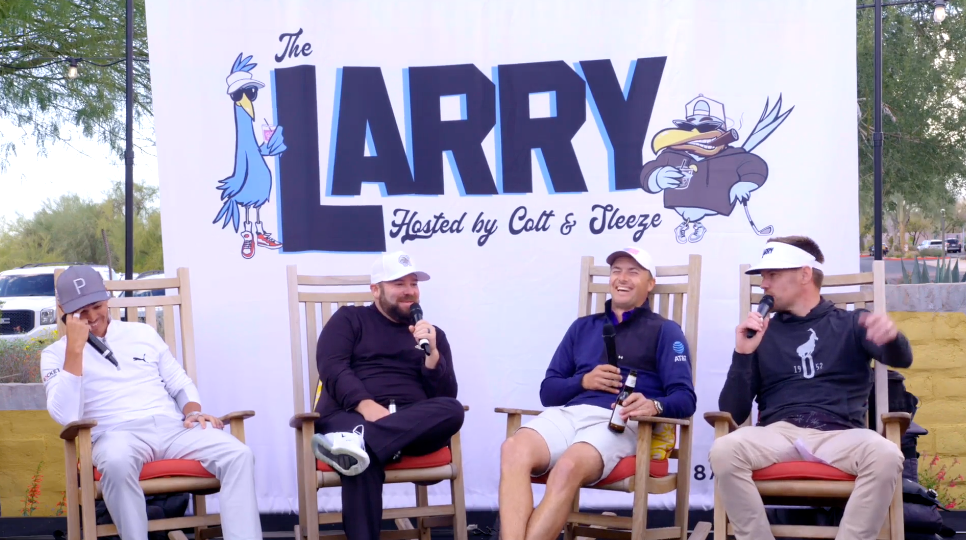
Custom ground Wilson Staff blades
Ryan Barath
SCOTTSDALE, Ariz. — PGA Tour players are always looking for an edge when it comes to their iron play and ball striking. This usually equates to adjusting the lie angle, lofts or shafts, but more players than ever are getting custom ground irons to maximize performance.
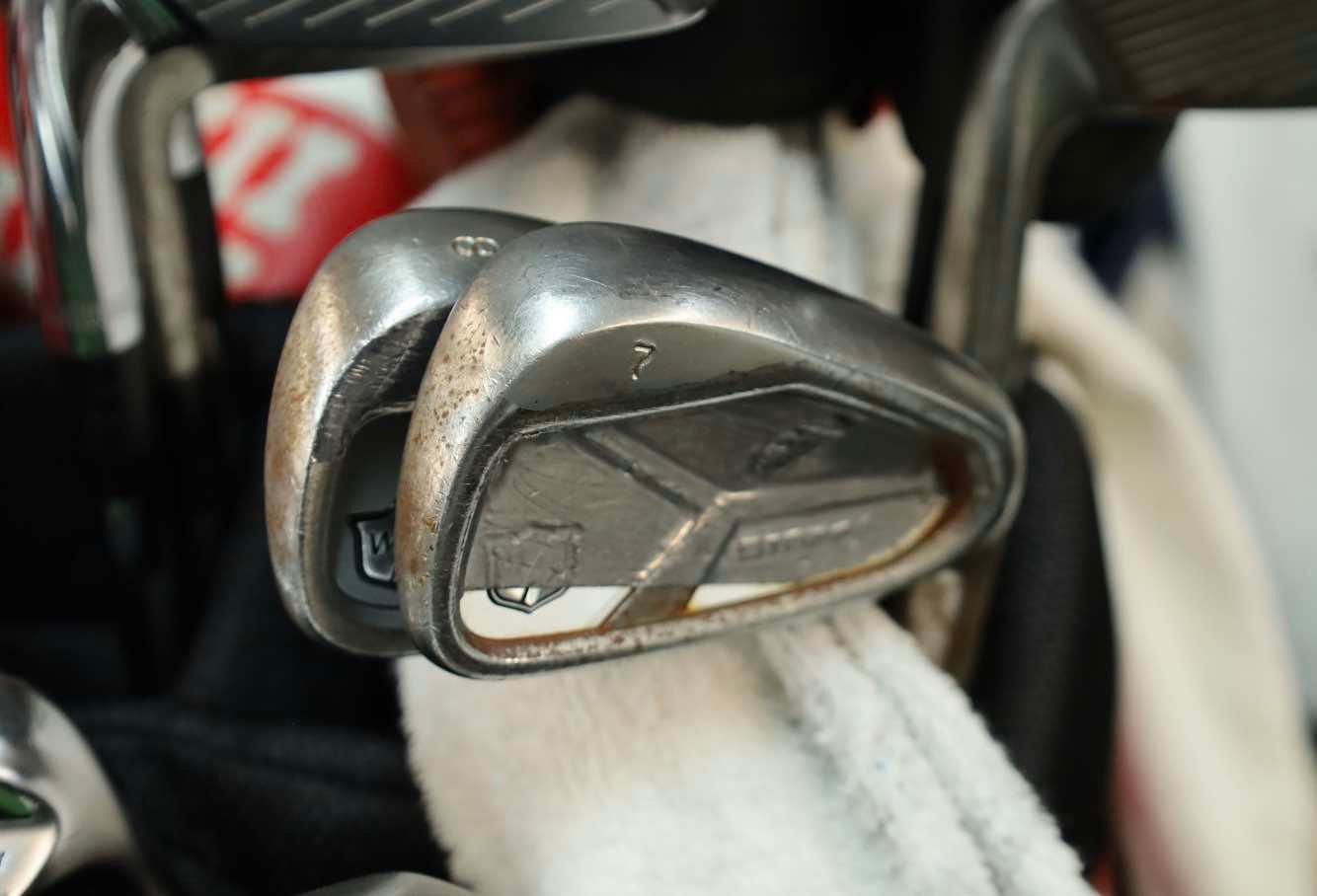
Ryan Barath
Adjusting sole grinds has generally been reserved for wedges, but more players are getting custom tweaks to their iron soles for improved turf interaction based on their swing dynamics. The reason: Just like with wedges, one size doesn’t fit all, and a custom grind can help golfers better align their vertical strike point (up and down from center) to reduce dispersion and increase performance.
How does this work?
Let’s start with bounce, which is the measured angle created between the leading edge and the lowest point on the sole. This is the part of the club that interacts with the ground through impact to help keep the club moving and not digging.
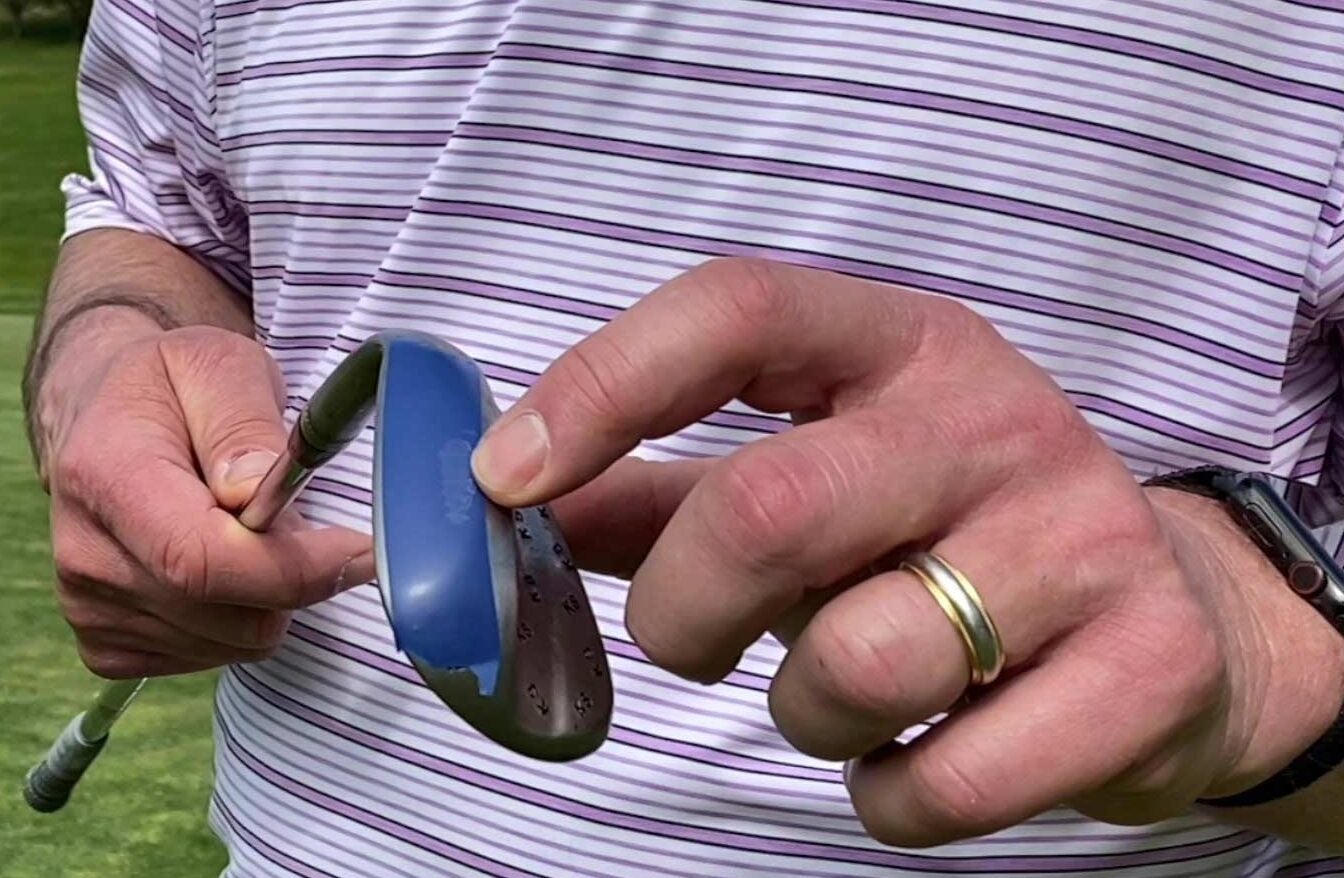
GOLF
The easiest and most practical way to explain how bounce works is the more of it you have, the harder it is for the club to dig. High bounce works for players who are steeper and take larger and deeper divots, and lower bounce works best for players who are more shallow and take thinner and less deep divots.
In almost every case, the iron strikes the ball before it interacts with the turf, but the proper sole grind and bounce still helps create consistent contact and prevent inconsistent distance control. The biggest difference between the sole of an iron and the sole of a wedge is that wedges need extra versatility because of the way they are manipulated around the green whereas irons are almost always hit at or around full speed with very little manipulation.
All of our market picks are independently selected and curated by the editorial team.
If you buy a linked product,
GOLF.COM may earn a fee. Pricing may vary.
Srixon ZX7 MKII Irons
Starting at $1200 for a 7-piece set
Click through to purchase your new Srixon ZX7 MKII irons at Fairway Jockey today.
Custom grind examples
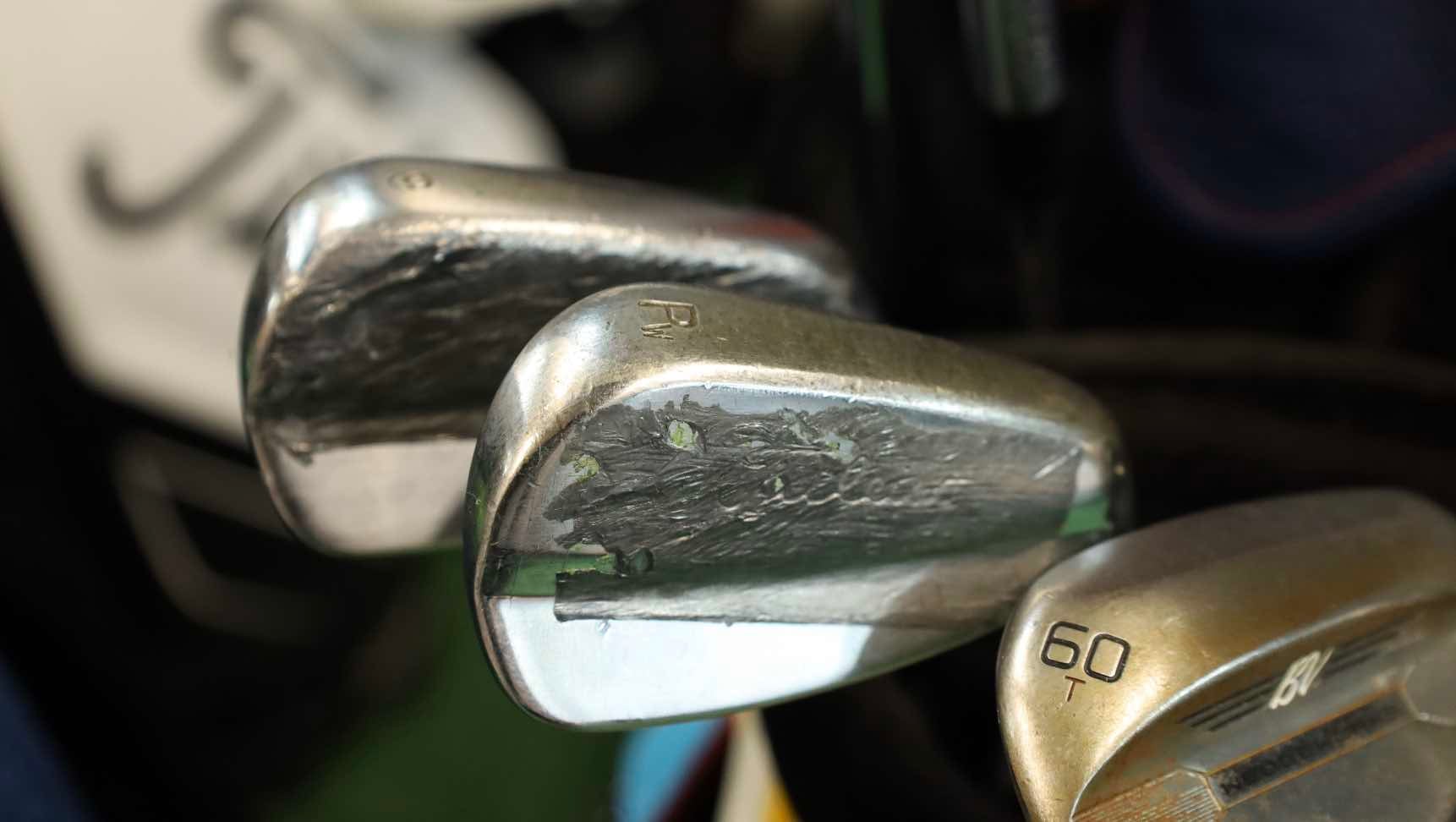
Ryan Barath
Billy Horschel’s irons are bent weak to reduce offset, and have custom grinds soles to get bounce when he wants it. This is an example of how when you bend clubs to either add or reduce loft, it impacts bounce.
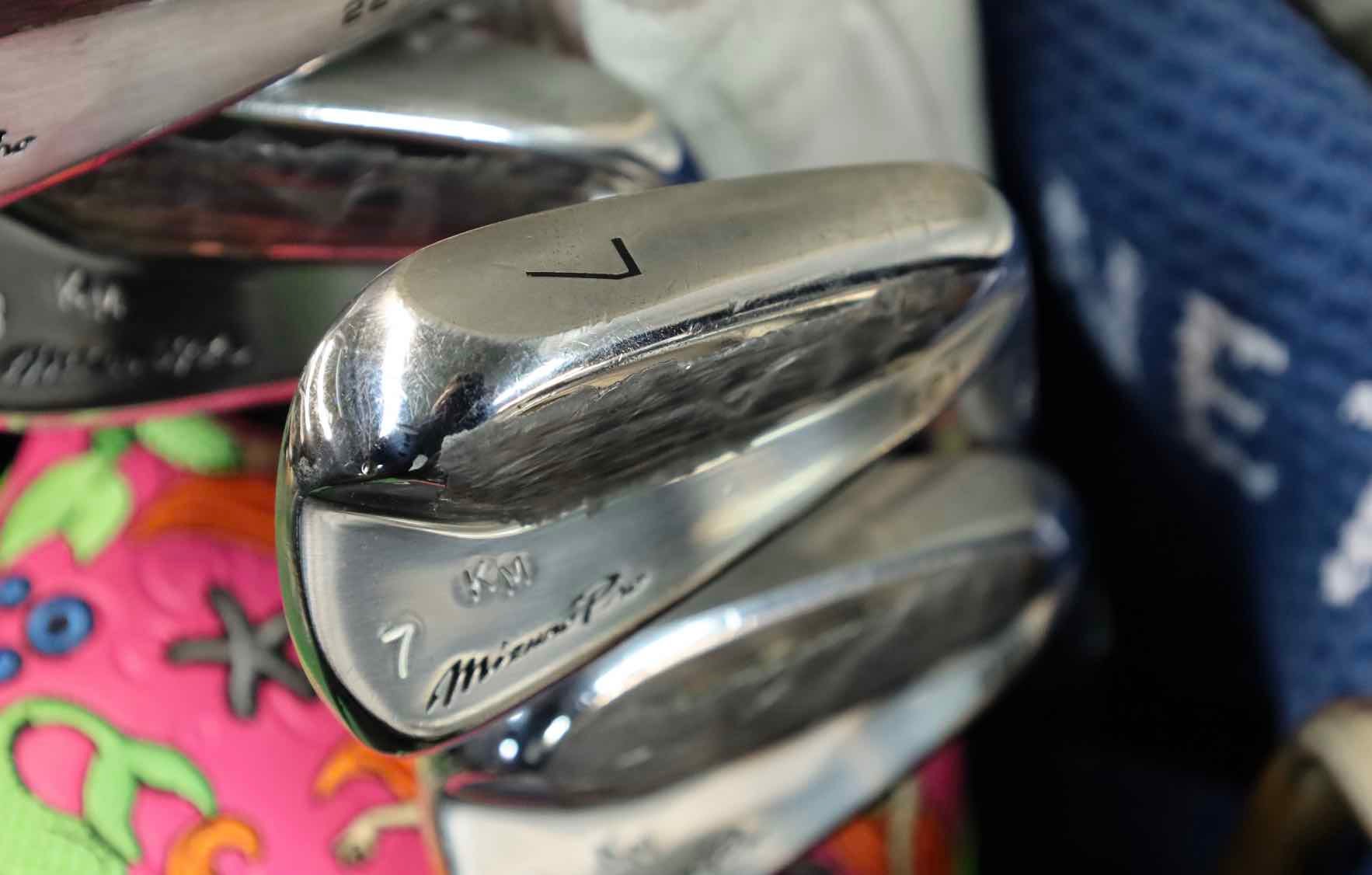
Ryan Barath
Because he has a steeper delivery, Keith Mitchell has short irons that have been ground to flatten the sole and add bounce to prevent excess digging. Compared to a standard Mizuno Pro 221, the sole grind also has less camber, which is the amount of curvature from the front to the back of the sole.
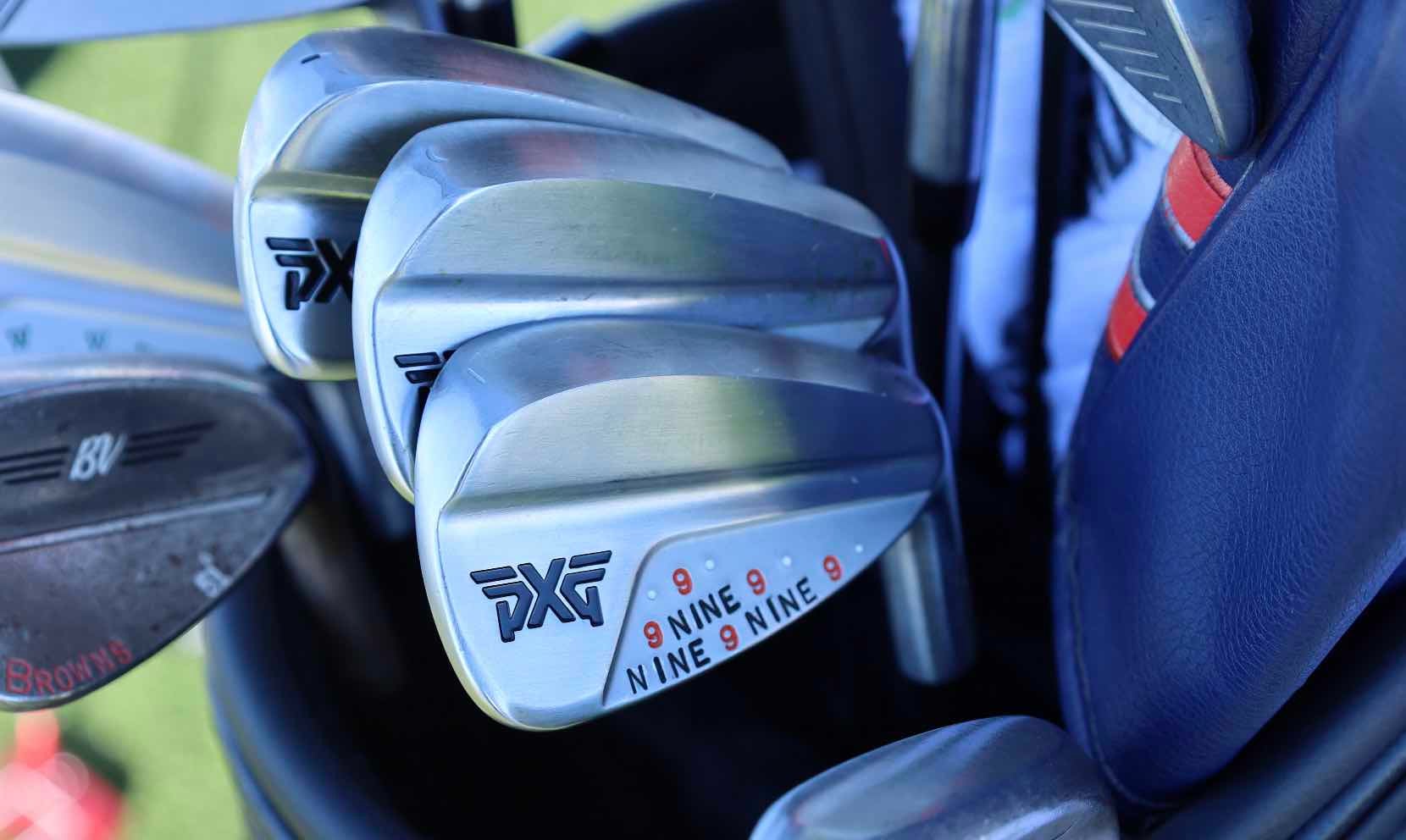
Ryan Barath
On the opposite end of the spectrum, David Lipsky has his PXG 0211 blade irons ground to reduce the bounce and increase camber along the back edge of the club to further lower the leading edge. When talking to the PXG Tour rep, Lipsky explained that as a shallow player that doesn’t take large divots, the reduced bounce on David’s irons help him contact the ball better from various lies.
So next time you’re looking at irons, and you feel that something might be preventing you from making the best possible contact, take a look at the sole, and explore other models in the same category that might offer you a better sole grind option to maximize performance.
Want to overhaul your bag for 2023? Find a fitting location near you at GOLF’s affiliate company True Spec Golf. For more on the latest gear news and information, check out the Fully Equipped podcast below.




